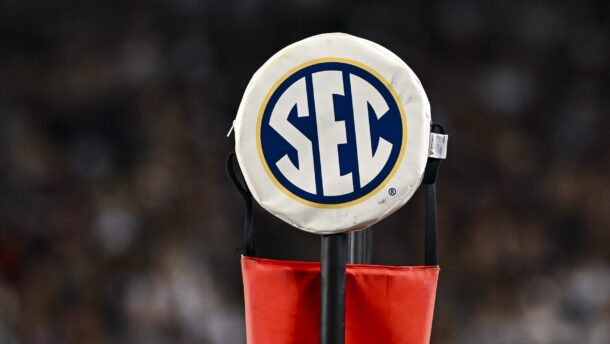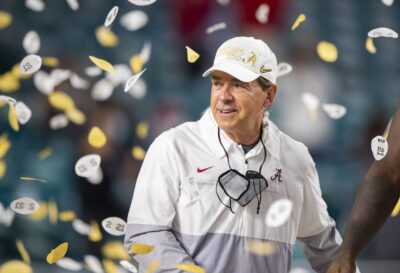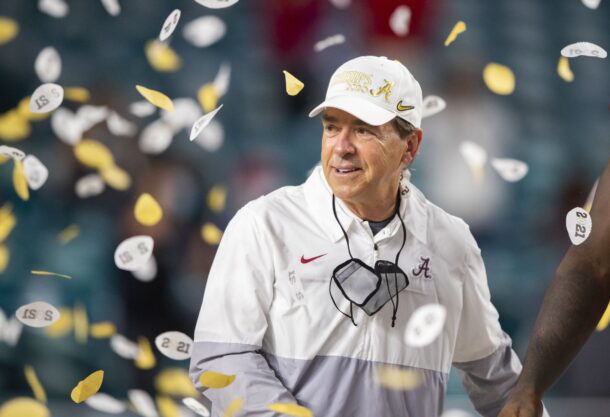Individual Position Rankings
- QUARTERBACKS
- RUNNING BACKS
- WIDE RECEIVERS
- TIGHT ENDS
- OFFENSIVE LINEMEN
- DEFENSIVE ENDS
- DEFENSIVE TACKLES
- LINEBACKERS
- CORNERBACKS
- SAFETIES
History hasn’t changed. The SEC’s once again loaded at running back as we near the opening kickoff of another college football season.
Ranked in terms of talent and potential impact, here’s how the SEC’s impact running backs stack up this season:
10. Marlin Lane, Tennessee: The Vols’ featured back heading into Butch Jones’ second season, Lane is hoping to stay healthy for the first time in his career and showcase burst and vision that’s been a contributing factor to his nearly 5-yard per carry career average. Lane’s a reliable every-down option, but five-star freshman Jalen Hurd will also see his share of totes as the quicker, more explosive ballcarrier.
9. Kelvin Taylor, Florida: This sophomore took advantage of playing opportunity as a true freshman after an injury to Matt Jones with 457 yards and four touchdowns over Florida’s final seven games. A strong spring put Taylor ahead of Jones and Mack Brown on the depth chart. He’s better suited as a run-catch threat in Kurt Roper’s new system and should flourish alongside a healthy Jeff Driskel.
8. Jonathan Williams, Arkansas: The thunder to Alex Collins’ lightning, Williams could be the best of the Razorbacks’ three-headed monster backfield also featuring lesser-known talent Korliss Marshall. Williams, like Collins and Marshall, has breakaway speed but his calling card is his power and low pad level in third-and-short situations. In need of a crucial yard, Arkansas will give it to Williams this fall.
7. Cameron Artis-Payne, Auburn: He’s not expected to produce 1,800 yards like predecessor Tre Mason, but Artis-Payne seems to be the guy who will see the bulk of the workload in the Tigers’ run-heavy attack as a senior unless Corey Grant impresses over the next few weeks. Artis-Payne averaged 6.7 yards per carry last season, fourth-best in the SEC for players with at least 85 attempts and is especially productive inside the red zone.
6. Leonard Fournette, LSU: The wild-card of the bunch, the hype alone surrounding Fournette warrants a Top 10 ranking just to avoid the repercussions of biggest snub questions at season’s end if the five-star freshman’s at 900 yards and nine touchdowns. Depending on how quickly Fournette adjusts to Cam Cameron’s offense, he’ll play a healthy number of snaps in the opener. It’s important to note that while Terrence Magee’s the No. 1 option for the Tigers heading into camp, it’s Fournette who will likely own the job by November.
5. Alex Collins, Arkansas: Being a marked man always makes the following season that much more difficult, but Collins has the talent to overcome whatever obstacles he may face defensively as a sophomore. Coming off a 1,026-yard campaign, expectations are for the Ft. Lauderdale native to produce. Collins and Williams aren’t on Darren McFadden and Felix Jones’ level yet, but another near 2,000-yard rushing season combined puts them in the conversation. Arkansas’ win-loss results will determine whether or not their numbers are again buried at the bottom of the standings.
4. Derrick Henry, Alabama: This sensational sophomore looks a lot like Trent Richardson when he hits the hole, showing off the perfect blend of strength and burst with a dab of nastiness. It was doubtful highly-touted freshman Bo Scarbrough would’ve been in Alabama’s 2014 rotation, but after failing to qualify, Henry’s only competition for the second-most carries behind T.J. Yeldon is Kenyan Drake. Unlike Fournette, an underclassman with a similar skill set, we know what Henry’s capable of at the SEC level.
3. Mike Davis, South Carolina: Tempted to throw the Gamecocks’ top offensive stud ahead of Yeldon in the two-hole, Davis is capable of a memorable 1,500-yard, 20-touchdown season in Columbia this fall as one of the SEC’s Heisman threats with breakaway speed often unmatched at the running back position. But is he durable enough to sustain the nearly 300 carries needed to surpass that total? Due to South Carolina’s depth at the position, Davis doesn’t have the same workhorse strain that ultimately led to Marcus Lattimore’s weathering. Then again, Steve Spurrier’s acknowledged his expectation that this is Davis’ final season and if the Gamecocks plan on winning an Eastern Division championship, this junior will do much of the heavy lifting.
2. T.J. Yeldon, Alabama: Electric out of the Alabama backfield as a ballcarrier and receiving option, Yeldon’s posted back-to-back 1,000-yard seasons as the Crimson Tide’s primary offensive threat. Naturally-gifted Henry has received most of the preseason pub, but Yeldon has the reps and is a proven impact player. If he tones down the fumbles, Yeldon could be the next elite running back to emerge from Tuscaloosa, joining Mark Ingram, Trent Richardson and Eddie Lacy.
1. Todd Gurley, Georgia: Possessing everything coaches look for in a bruising power back, Gurley is cut from a different mold than the rest. Ballcarriers with defensive tackle-sized legs aren’t supposed to out-run safeties in a foot race to the pylon or make linebackers miss with precision in the open field. Watch one of Gurley’s game films and you’ll run out of fingers trying to count the number of broken tackles. College football’s rhinoceros at the position, you don’t come to Gurley’s watering hole unless you’re invited.







